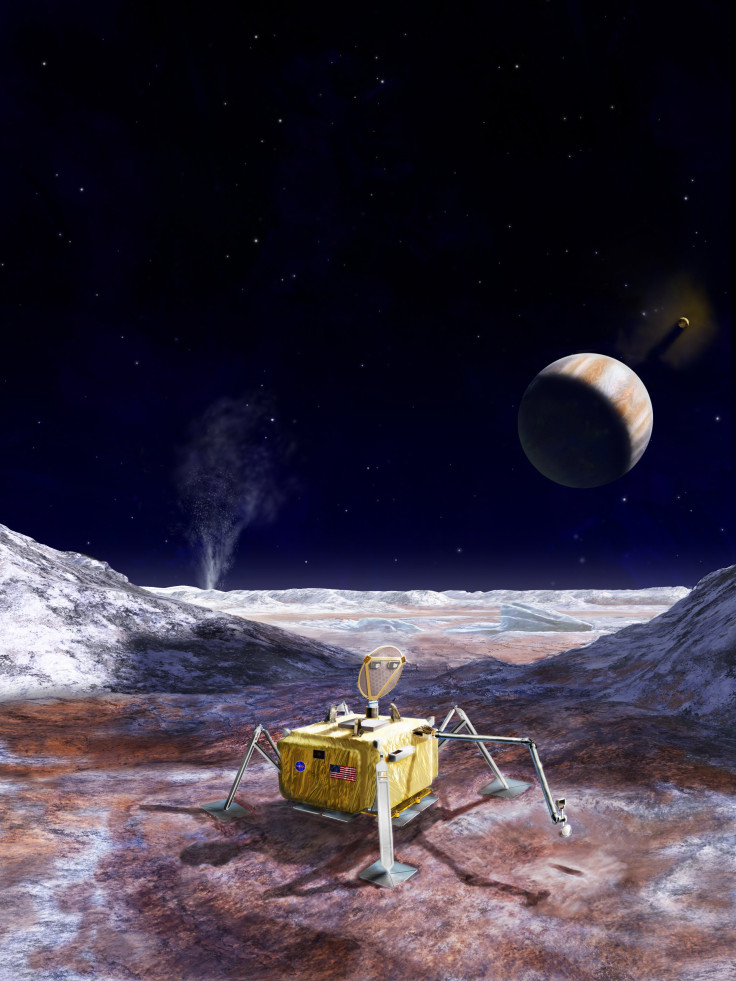Life On Europa? NASA Details Plan To Send Lander To The Jovian Moon To Look For Biological Signatures

If there is life beyond Earth somewhere in our solar system, Europa is probably where it’s most likely to be lurking. Observations have indicated that the Jovian moon has a salty, subsurface ocean, and, as our experience on Earth has shown, where there is water, there is life.
In 2015, NASA revealed its plans to send a spacecraft to conduct several close flybys of Europa sometime in the 2020s. Now, the space agency has detailed — in a Science Definition Team (SDT) report — a mission to send a lander to the icy moon.
The 264-page report, which can be accessed here, lists out three key science goals for a future lander mission — searching for life on the moon, assessing its habitability by analyzing material from the surface, and characterizing Europa’s surface and subsurface to support future robotic missions.
“The Europa Lander mission would be a pathfinder for characterizing the biological potential of Europa’s ocean through direct study of any chemical, geological, and possibly biological, signatures as expressed on, and just below, the surface of Europa,” the report states. “This mission would significantly advance our understanding of Europa as an ocean world, even in the absence of any definitive signs of life, and would provide the foundation for the future robotic exploration of Europa.”
The report provides a glimpse of what the lander may look like, and describes the instruments that would be needed to accomplish its science mission. Going by the artist’s rendering, the four-footed lander would contain an extendable sampling arm and a circular dish on top that would serve as a high-gain antenna and camera mast. Electronics on all elements of the spacecraft that are sensitive to radiation would be heavily shielded to protect them from the high-energy particles Jupiter’s intense magnetic field whips around.
“The spacecraft in its stowed launch configuration would be comprised of five primary elements. These elements are the Carrier Relay Orbiter stage, the Deorbit Stage, the Descent Stage, the Lander, and the Bio-Barrier,” the SDT report said. “In its launch configuration, the Deorbit Stage, Descent Stage, and Lander would be fully enclosed within the Bio-Barrier, and the Lander inverted with respect to its landed orientation.”

However, given that the mission is still in its preliminary stages, the lander design and the instruments it would carry may still change.
Although the dates for the mission are far from being finalized, an optimistic estimate pegs the launch date at sometime in 2024, followed by a landing on Europa in April 2031. These may also change depending on how the work on the SLS rocket, which the space agency plans to use for the launch, progresses.
NASA has now scheduled two town hall meetings — one in Texas on March 19 and the other in Arizona on April 23 — to discuss the findings of the report, receive feedbacks from the science community, and to chart the way forward.
© Copyright IBTimes 2024. All rights reserved.





















